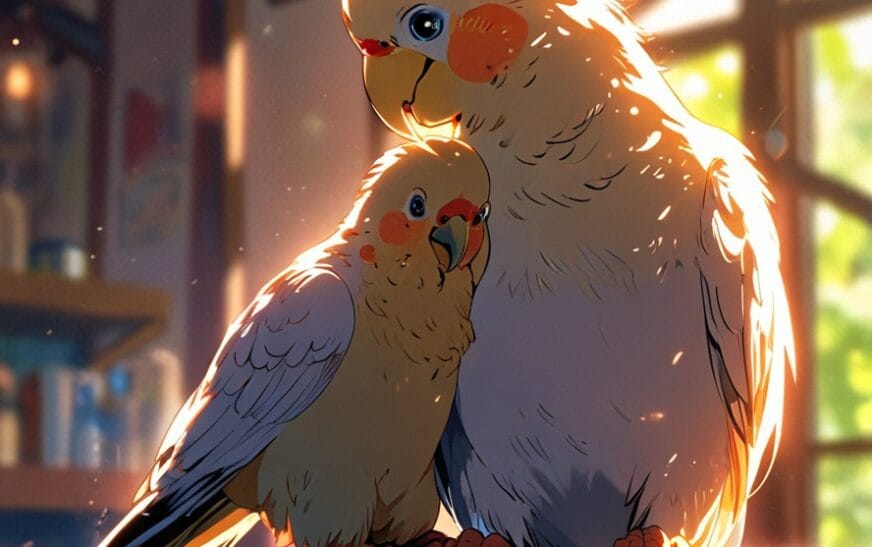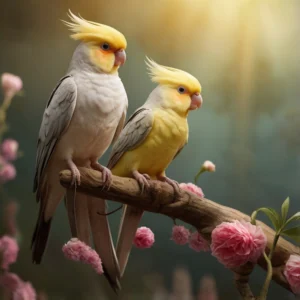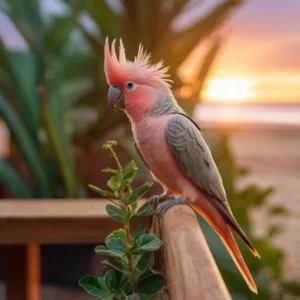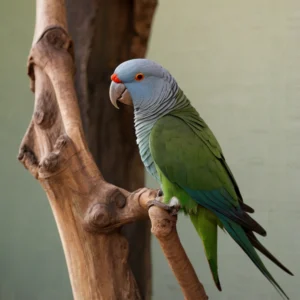Cockatiels are one of the most popular pet birds, as we will see in this post ‘Discover the 9 Rarest and Most Beautiful Cockatiel Colors’ this pets are loved for their personality and beautiful colors. Among these birds, there are some unique and rare color mutations that captivate bird enthusiasts. If you’re curious about what makes a cockatiel’s color rare and how to recognize these special birds, this guide will help you explore to Discover the 9 Rarest and Most Beautiful Cockatiel Colors and understand why they stand out.
Table of Contents
1. What is a Rare Cockatiel Color?
A rare cockatiel color is a color mutation that occurs less frequently in the cockatiel population. These mutations happen due to changes in their genetics, affecting feather pigmentation. While some colors like grey are common, rare colors like albino, cinnamon, and pearl are harder to find. Rare cockatiels often attract more attention from breeders and pet owners because of their unique and exotic appearance. Some rare colors may even be more expensive due to their rarity and demand.
2. Albino Cockatiel: A Stunning White Beauty
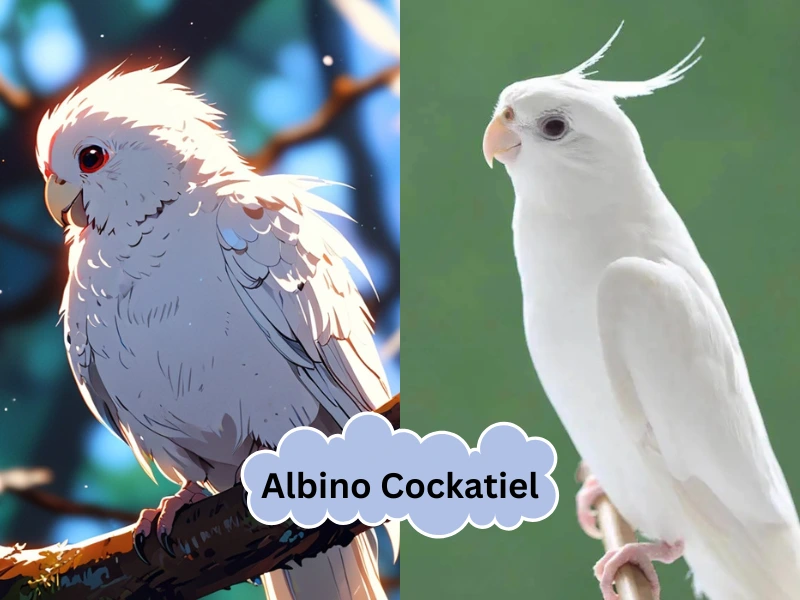
The albino cockatiel is one of the rarest and most stunning color mutations. This bird is completely white, with no grey or yellow tones, and has striking red eyes. The albino mutation is caused by a combination of the lutino and white-faced mutations, giving the bird a pure white appearance. Albino cockatiels can sometimes be confused with lutino cockatiels, but their red eyes and absence of any yellow feathers make them distinct. These birds are highly sought after by bird enthusiasts for their unique, angelic look.
3. Lutino Cockatiel: The Yellow Charm
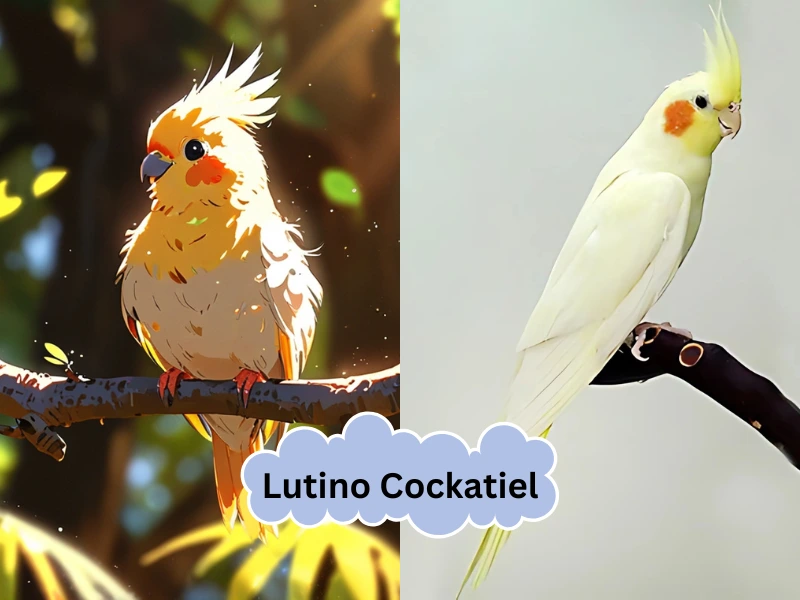
The lutino cockatiel is another rare and eye-catching color mutation. These birds have a bright yellow body with orange cheeks and no grey on their feathers. The lutino mutation is caused by a recessive gene that removes the grey color from the cockatiel’s plumage. Lutino cockatiels often have red eyes, especially when they are young, making them look even more unique. These birds are popular for their striking yellow color and playful personality, which makes them a favorite choice among pet owners.
4. Cinnamon Cockatiel: The Soft Brown Delight
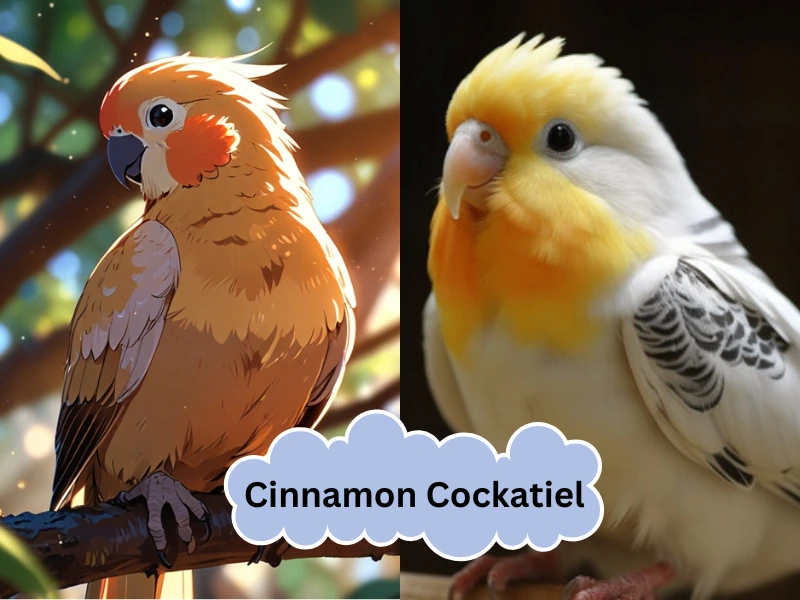
Cinnamon cockatiels have a warm, soft brown color that sets them apart from the common grey cockatiel. This mutation affects the melanin in their feathers, giving them a brownish tone instead of grey. Cinnamon cockatiels often have lighter beaks and feet compared to other color mutations. Their gentle brown color gives them a soft, earthy appearance, making them a favorite for bird owners who prefer subtle yet unique colors. Cinnamon cockatiels are rare but highly appreciated for their calming and elegant look.
5. Pied Cockatiel: A Unique Color Pattern
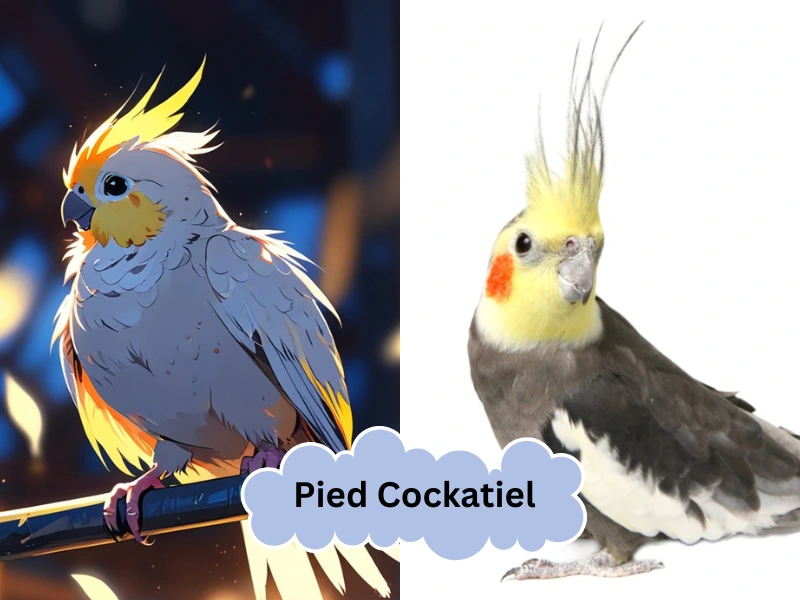
The pied cockatiel stands out due to its unique pattern of colored and white feathers. This mutation causes random patches of yellow or white feathers on a bird’s normally grey body. No two pied cockatiels look exactly the same, which makes them a special choice for bird enthusiasts. Some pied cockatiels may have more white than grey, while others may show more yellow in their plumage. The randomness of the pied pattern makes each bird truly one of a kind.
6. Fallow Cockatiel: A Rare and Delicate Shade
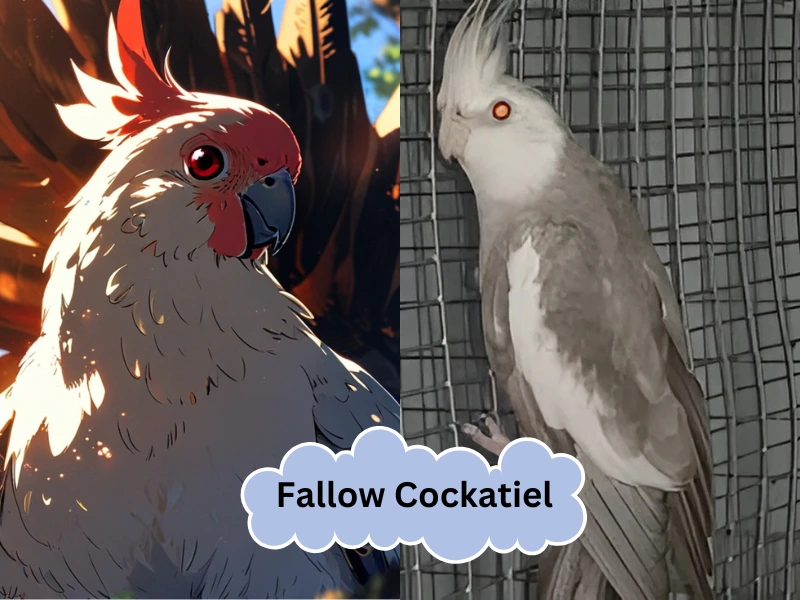
Fallow cockatiels are quite rare, with a delicate, light brown or tan color. This mutation is similar to the cinnamon mutation, but fallow cockatiels have red or ruby-colored eyes, which makes them stand out. The fallow mutation reduces the amount of melanin in the feathers, giving the bird a lighter and softer appearance. These birds are highly sought after due to their rarity and the distinct beauty of their light, almost golden, coloration.
7. Pearl Cockatiel: The Spotted Wonder
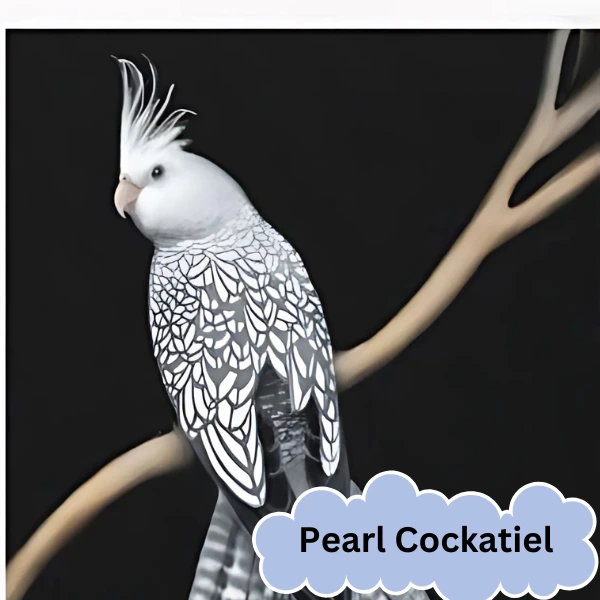
The pearl cockatiel is another rare and stunning color mutation. These birds have a distinctive spotted pattern on their feathers, with white or yellow spots scattered across their wings and back. The pearl mutation creates a beautiful contrast against the bird’s main color, whether it’s grey, cinnamon, or another shade. This unique patterning makes pearl cockatiels highly desirable for breeders and owners who want something visually striking.
8. Silver Cockatiel: The Metallic Beauty
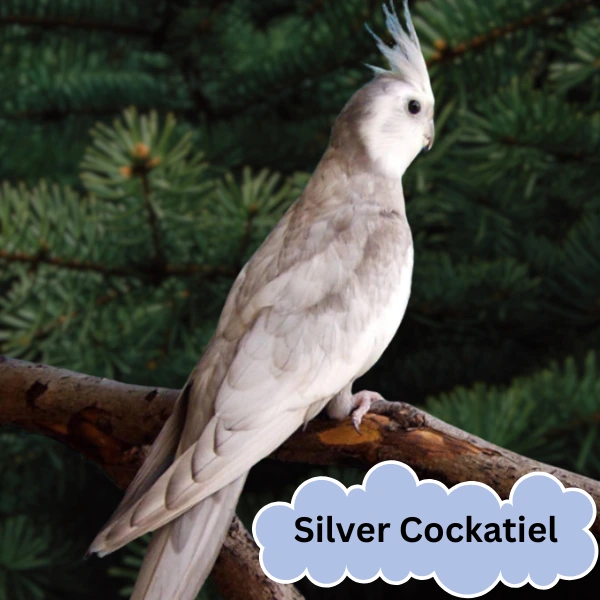
Silver cockatiels are known for their sleek, metallic-looking feathers. This rare mutation gives the bird a shiny, silver-grey appearance that is quite striking. The silver mutation affects the melanin in the bird’s feathers, creating a shimmering effect that reflects light beautifully. Silver cockatiels are highly valued for their elegant and unusual look, making them a popular choice among bird collectors and enthusiasts.
9. Pastel-Face Cockatiel: A Subtle and Rare Look
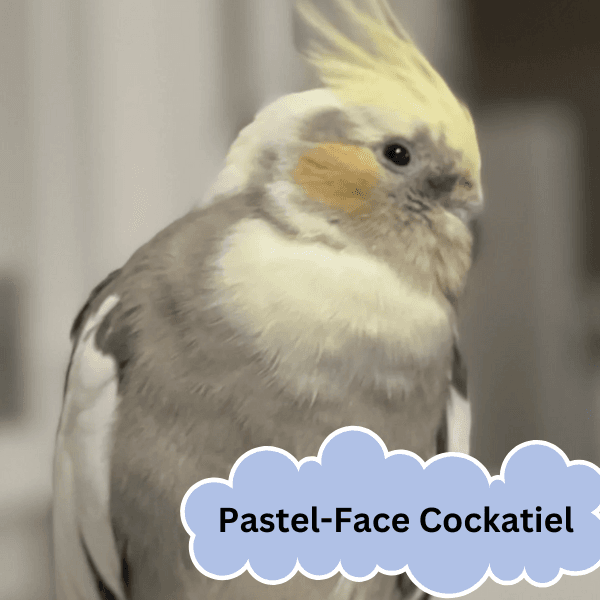
The pastel-faced cockatiel is another rare mutation, characterized by softer and more subtle colors on the face. Unlike the bright orange cheeks seen on most cockatiels, pastel-faced cockatiels have a lighter, softer shade of orange or even peach. This gives them a delicate and gentle appearance. The pastel-faced mutation is recessive, which makes it less common and highly prized among breeders who are looking for unique color variations.
10. Emerald Cockatiel: The Green Tint
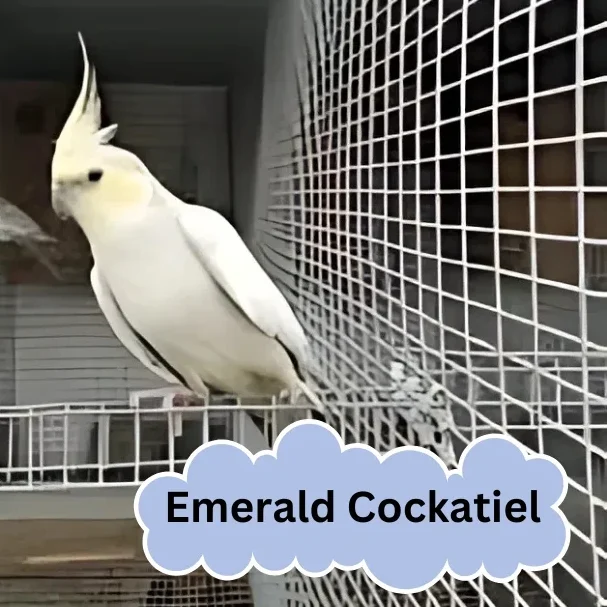
One of the rarest mutations is the emerald cockatiel, which has a subtle greenish tint to its feathers. This mutation is extremely uncommon, and the green hue is usually most noticeable in the bird’s wings and tail. Emerald cockatiels are prized for their unusual coloring and are often the subject of fascination among bird enthusiasts. Due to the rarity of this mutation, finding an emerald cockatiel can be difficult, making them highly sought after.
11. How to Identify a Rare Cockatiel Color
Identifying a rare cockatiel color can be challenging if you’re unfamiliar with the different mutations. Each rare color, such as albino, cinnamon, or pearl, has specific traits that set it apart. Albinos, for example, are completely white with red eyes, while cinnamon cockatiels have a soft brown color. Familiarizing yourself with these traits will help you recognize a rare cockatiel more easily. If you’re unsure, consulting a breeder or avian expert can provide you with confirmation.
12. Why Are Some Cockatiel Colors So Rare?
Some cockatiel colors are rare because they result from specific genetic mutations that don’t occur frequently. These mutations may be recessive, meaning both parents must carry the gene to pass it on. Breeding for rare colors can be difficult, as it often takes several generations to produce birds with the desired mutation. Additionally, some rare colors may be less common in the wild due to survival challenges, further increasing their rarity in,
Frequently Asked Questions About the Rarest Cockatiel Color
Q1: What is the rarest cockatiel color?
The albino cockatiel is considered the rarest. It’s completely white with red eyes, resulting from a combination of lutino and white-faced mutations. check this video may help you to know what type of cockatiel you have Youtube
Q2: Why are rare cockatiel colors so expensive?
Rare cockatiel colors, like albino or pearl, are expensive due to their genetic rarity and the difficulty breeders face in producing these mutations.
Q3: How can I identify a rare cockatiel color?
Rare cockatiel colors, like albino or cinnamon, are identified by unique features such as all-white feathers, red eyes, or soft brown tones. you can find different types of cockatiel Here
Q4: Are albino cockatiels hard to breed?
Yes, albino cockatiels are challenging to breed as both parents must carry the specific mutations for an albino offspring.
Q5: Do rare cockatiel colors need special care?
Rare cockatiels don’t need special care but should be kept healthy with proper diet, interaction, and regular vet visits due to their higher value.





